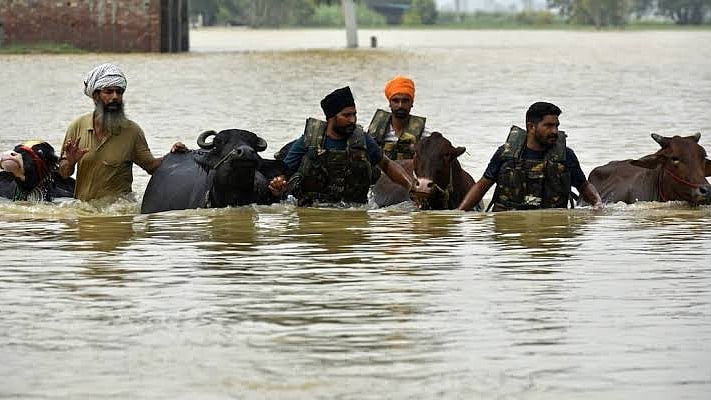Nation
From floodwaters to fever: Punjab battles a fresh epidemic
The state government, though forewarned by tropical disease experts, seems to be caught without a prevention plan — and is reacting by waiting on the weather

Only a few weeks ago, Punjab was battling swollen rivers and flooded fields. Today, the state finds itself facing a very different kind of deluge — a flood of mosquitoes.
As stagnant water continues to linger in many parts of the state after the heavy monsoon rains, cases of dengue and chikungunya have begun to rise sharply. What began as isolated reports in some areas has now taken the shape of a full-blown health crisis across Punjab.
Over the past three weeks, the number of dengue and chikungunya cases has grown rapidly, yet the full extent of the problem remains unclear. Official data on the spread of these diseases is patchy and incomplete.
The Punjab government released figures in the week of 12 October covering just 12 of the state’s 26 districts. According to that report, fewer than 2,000 dengue cases had been officially registered. Of these, Patiala district emerged as the worst affected, with roughly 500 confirmed cases. Within Patiala, Nabha town has been hit the hardest.
However, public health experts caution that these figures represent only a fraction of the actual number of infections. The government’s data reflects cases recorded in government hospitals and laboratories alone. There is no mechanism in place at present to track cases diagnosed or treated in private clinics and labs, which serve a substantial portion of Punjab’s population.
During the Covid-19 pandemic, private diagnostic centres were required to report all test results to government authorities, ensuring a comprehensive record. No such reporting system exists for vector-borne diseases such as dengue and chikungunya, leaving a large information gap and an underestimation of the real threat.
The roots of the current crisis lie in last month’s devastating floods, which inundated over 2,500 villages across Punjab. While floodwaters have receded from most areas, stagnant pools remain in farmlands, low-lying areas and pits created by erosion. These pockets of water have now become breeding grounds for mosquitoes.
Published: undefined
Experts had warned of this possibility soon after the floods, urging immediate preventive action such as large-scale fogging, spraying and public sanitation drives. But those measures, if taken at all, were sporadic and insufficient.
Published: undefined
As a result, the warning has turned into reality. Since all 26 districts in Punjab were affected by the floods to some degree, there is every likelihood that dengue cases will continue to rise in other districts as well.
The crisis is not limited to dengue alone. Chikungunya, another mosquito-borne disease with similar symptoms, is spreading swiftly, particularly in Mansa district.
According to government records and independent reports, Mansa has reported the most severe chikungunya outbreak so far. The district’s healthcare infrastructure, however, is ill-equipped to handle such a surge. It has only two government hospitals — one in Mansa town and another in Budhlada — leaving vast rural areas dependent on private practitioners for even basic medical care. In an outbreak situation, this limited access could prove critical.
Health experts believe that Punjab’s mosquito menace will not subside quickly. Historically, dengue and chikungunya cases tend to persist until late November, when the onset of winter curtails mosquito breeding. Until then, health authorities can do little but try to control the spread through fogging, sanitation campaigns and public awareness drives.
Unfortunately, much of the response so far has been reactive rather than preventive. In the end, Punjab seems to be relying less on its health infrastructure and more on nature itself — waiting for the cold to arrive and kill off the mosquitoes.
The state’s dependence on weather to bring relief from a preventable health crisis raises serious questions about the effectiveness of its disease control mechanisms and the urgency with which such threats are addressed.
For now, the people of Punjab can only hope that the falling temperatures of winter will succeed where official measures have failed.
Published: undefined
Follow us on: Facebook, Twitter, Google News, Instagram
Join our official telegram channel (@nationalherald) and stay updated with the latest headlines
Published: undefined